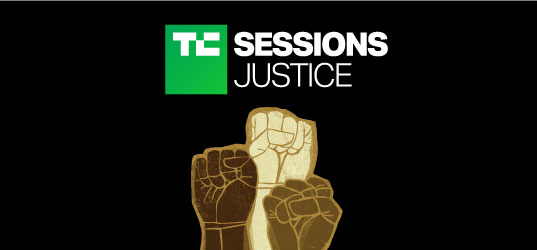With less than one week left until the election, DoorDash made a late contribution of $3.75 million to try to ensure California’s gig worker ballot measure Prop 22 passes. Meanwhile, Coinbase is looking for a head of diversity and inclusion and Uber was hit with claims of reverse racism.
All that and more in this week’s edition of Human Capital, a weekly newsletter where we unpack all-things labor and D&I. To receive this in your inbox every Friday at 1 p.m. PT, be sure to sign up here.
Let’s jump in.
Employees at surveillance startup Verkada reportedly used tech to harass co-workers
Oof. Just when we thought we were safe from surveillance, we’ve found yet another reason not to trust people with facial recognition tech. Just to be clear, the first part of that was sarcasm. Anyway, Vice reported earlier this week that some Verkada employees used the startup’s tech to take photos of their female colleagues and then made sexually explicit jokes.
When other employees reported the incident to human resources, Verkada CEO Filip Kaliszan simply gave the offenders a choice of leaving the company or having their share of stock reduced. After the Vice story went out, however, Verkada fired the three employees in question.
Coinbase is looking for a head of D&I
Coinbase is on the hunt for a director of belonging, inclusion and diversity. It’s worth noting Coinbase previously had a head of D&I, Tariq Meyers, but he began focusing on an employee support task force role as a result of COVID-19 in April, according to his LinkedIn page. Meyers later left the company in August, which was before Coinbase CEO Brian Armstrong took a stance about not speaking out about social issues.
That stance led to 5% of Coinbase’s employees opting to take a severance package to leave the company. Two of those employees were Coinbase Global Head of Marketing, John Russ and Coinbase VP Dan Yoo.
“We believe that it’s possible to be 100% committed to an inclusive workplace that values diversity where everyone is safe and belongs (and as part of that, working to root out and eliminate any intolerance or bias that exists at the company), and simultaneously maintain laser focus on our mission,” the job posting states. “To this end, we have made a public stance that Coinbase won’t issue external statements on topics beyond the scope of our mission of building a more open financial system and expanding economic freedom, while also redoubling our commitment to making the company an amazing place to work for all employees, regardless of background.”
Precursor VC promotes Sydney Thomas to Principal

Image Credits: Precursor Ventures
Sydney Thomas, who started her career at Precursor Ventures as an intern, was promoted to Principal. That means she’s able to deploy capital to startups on behalf of the fund.
“This is a promotion that has been earned through hard work, aptitude and a clear demonstration that Sydney embodies all of the values we hold dear here at Precursor,” the firm wrote in a blog post. “She has already made a number of investments on behalf of the firm and will continue to do so going forward.”
Indian engineers allege caste bias in tech industry
The Washington Post’s Nitasha Tiku shed some light on caste-based discrimination in the tech ecosystem. Specifically, 30 female Indian engineers who are part of the Dalit caste and work for companies like Apple, Google, Microsoft and Cisco, say they have faced caste bias. As Tiku explains, those in the Dalit caste are part of the lowest rank castes within India’s social hierarchy.
PayPal puts money into Black and Latinx-led VC funds
PayPal is investing $50 million in a handful of early-stage funds led by Black and Latinx venture capitalists. The investment is part of PayPal’s $530 million commitment to support Black-owned businesses.
The funds receiving money include Chingona Ventures, Fearless Fund, Harlem Capital, Precursor Ventures, Slauson & Co, VamosVenturs, Zeal Capital Partners and another undisclosed fund.
Reddit elevates its VP of people and culture
Nellie Peshkov, formerly Reddit’s VP of People and Culture, is now Chief People Officer. Her appointment to the C-suite is part of the much-needed, growing trend of tech companies elevating employees focused on diversity and inclusion to the highest leadership ranks.
Uber Eats hit with claims of “reverse racism”
Uber said it has received more than 8,500 demands for arbitration as a result of it ditching delivery fees for Black-owned restaurants via Uber Eats.
Uber Eats made this change in June, following racial justice protests around the police killing of George Floyd, an unarmed Black man. Uber Eats said it wanted to make it easier for customers to support Black-owned businesses in the U.S. and Canada. To qualify, the restaurant must be a small or medium-sized business and, therefore, not part of a franchise. In contrast, delivery fees are still in place for other restaurants.
In one of these claims, viewed by TechCrunch, a customer says Uber Eats violates the Unruh civil Rights Act by “charging discriminatory delivery fees based on race (of the business owner).” That claim seeks $12,000 as well as a permanent injunction that would prevent Uber from continuing to offer free delivery from Black-owned restaurants.
Uber driver claims rating system is racially biased
Uber is no stranger to lawsuits, so this one shouldn’t come as a surprise. Uber is now facing a lawsuit regarding its customer ratings and how the company deactivates drivers whose ratings fall below a certain threshold. The suit alleges the system “constitues race discrimination, as it is widely recognized that customer evaluations of workers are frequently racially biased.”
In a statement to NPR, Uber called the suit “flimsy” and said “ridesharing has greatly reduced bias for both drivers and riders, who now have fairer, more equitable access to work and transportation than ever before.”
Yes on Prop 22 gets another $3.75 million influx of cash
DoorDash put in an additional $3.75 million into the Yes on 22 campaign, according to a late contribution filing. Proposition 22 is the California ballot measure that aims to keep gig workers classified as independent contractors.
The latest influx of cash brought Yes on 22’s total contributions north of $200 million. As of October 14, the campaign had raised $189 million. But thanks to a number of late contributions, the total put toward Yes on 22 comes out to about $202,955,106.38, or, $203 million.
Prop 22 hit the most-funded California ballot measure long ago, but it’s now surpassed the $200 million mark.
TechCrunch Sessions: Justice is back

I am pleased to announce TechCrunch Sessions: Justice is officially happening again! Save the date for March 3, 2021.
We’ll explore inclusive hiring, access to funding for Black, Latinx and Indigenous people, and workplace tools to foster inclusion and belonging. We’ll also examine the experiences of gig workers and formerly incarcerated people who are often left out of Silicon Valley’s wealth cycle. Rounding out the program will be a discussion about the role of venture capital in creating a more inclusive tech ecosystem. We’ll discuss all of that and more at TC Sessions: Justice.
from TechCrunch https://ift.tt/37Vl5q5
via IFTTT



 LPs: The ≧1% of a fund capital commitment you expect from GPs makes it hard for POCs to raise funds.
LPs: The ≧1% of a fund capital commitment you expect from GPs makes it hard for POCs to raise funds.